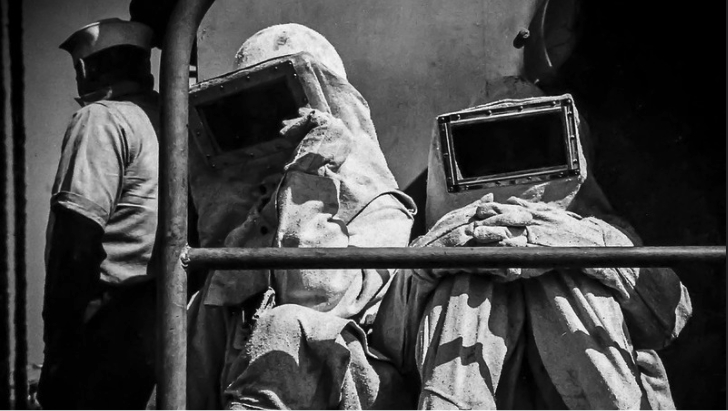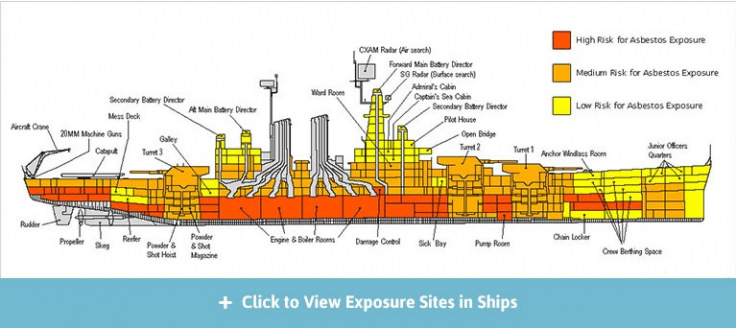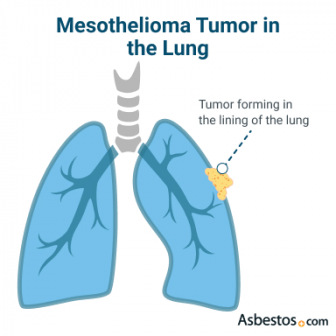Navy Veterans with Mesothelioma
Military veterans account for 30% of annual mesothelioma claims. Among all branches, the U.S. Navy extensively utilized asbestos, leading to higher risks for navy veterans. Mesothelioma cancer often develops due to exposure to asbestos products on ships, submarines and military bases.
Asbestos.com is the nation’smost trustedmesothelioma resource
The Mesothelioma Center at Asbestos.com has provided patients and their loved ones the most updated and reliable information on mesothelioma and asbestos exposure since 2006.
Our team of Patient Advocates includes a medical doctor, a registered nurse, health services administrators, veterans, VA-accredited Claims Agents, an oncology patient navigator and hospice care expert. Their combined expertise means we help any mesothelioma patient or loved one through every step of their cancer journey.
More than 30 contributors, including mesothelioma doctors, survivors, health care professionals and other experts, have peer-reviewed our website and written unique research-driven articles to ensure you get the highest-quality medical and health information.
关于间皮瘤中心Asbestos.com
- Assisting mesothelioma patients and their loved ones since 2006.
- Helps more than 50% of mesothelioma patients diagnosed annually in the U.S.
- A+ rating from the Better Business Bureau.
- 5-star reviewed mesothelioma and support organization.
Testimonials
My family has only the highest compliment for the assistance and support that we received from The Mesothelioma Center. This is a staff of compassionate and knowledgeable individuals who respect what your family is experiencing and who go the extra mile to make an unfortunate diagnosis less stressful. Information and assistance were provided by The Mesothelioma Center at no cost to our family.LashawnMesothelioma patient’s daughter
How to Cite Asbestos.com’s Article
APA
Munz, A. (2023, October 5).Navy Veterans with Mesothelioma.Asbestos.com. Retrieved October 11, 2023, from //www.magnakarsa.com/navy/
MLA
Munz, Aaron. "Navy Veterans with Mesothelioma."Asbestos.com, 5 Oct 2023, //www.magnakarsa.com/navy/.
Chicago
Munz, Aaron. "Navy Veterans with Mesothelioma." Asbestos.com. Last modified October 5, 2023. //www.magnakarsa.com/navy/.
Asbestos Exposure in the Navy
Asbestos exposure occurred among naval personnel because the Navy used asbestos throughout ships and shipyards for its fireproofing ability and resistance to salt corrosion. All Navy veterans were at risk of exposure becauseasbestos productswere so widely used on vessels and in shipyards.
Navy personnel who performed maintenance and repair tasks on equipment, pipes and pumps faced the highest levels of exposure. According to a 2022 study, those who worked with lagging and other forms of asbestos insulation on pipes, pumps and boilers also endured significant levels of exposure.
Vessels constructed before the 1980s may contain legacy asbestos products that still pose an exposure risk to anyone performing repairs or decommissioning ships. Naval shipyard workers remain at risk of asbestos exposure to old materials that may have been covered up rather than completely removed.
Navy Occupations with Highest Exposure Risk
老兵修造和维护设备often faced the highest levels ofasbestos exposure. All roles that involved working on or around asbestos insulation put sailors at great risk. Some Navy service members even wore equipment made of asbestos cloth including protective gear for firefighters and heat-resistant gloves for sailors manning gun turrets.

U.S. Merchant Marineswere civilian mariners who faced similar asbestos exposure to naval veterans on U.S. Liberty ships. Merchant mariners who served outside of World War II do not qualify for VA benefits, but they may be eligible to file other legalclaims for asbestos exposure.
Navy Jobs Historically Associated with Asbestos Exposure:
- Boatswain’s Mate:Boatswain’s mates direct ship activities and perform maintenance duties above and below deck. They sanded asbestos paint and repaired asbestos floor tiles.
- Boiler Technician:Boiler technicians operate and repair marine steam boilers that contained asbestos insulation, gaskets and valves.
- Damage Control Worker:Damage control workers perform firefighting and emergency repairs after enemy contact. They wore asbestos firefighting suits, asbestos gloves and asbestos slippers.
- Electrician’s Mate:Electrician’s mates operate and repair marine electrical systems that contained asbestos insulation and asbestos electrical wiring.
- Fire Control Technician:Fire control technicians operate and maintain weapon systems on submarines. They wore asbestos hoods and gloves to prevent burns while operating gun turrets filled with asbestos.
- Gunner’s Mate:Gunner’s mates care for a ship’s armament and help operate weapon systems. They wore protective clothing and gloves made of asbestos and were exposed to asbestos insulation knocked loose from firing heavy artillery.
- Hull Maintenance Technician:Hull maintenance technicians fabricate, install, repair and maintain metal structures aboard Navy ships including valves and plumbing that contained asbestos insulation.
- Lagger:Also known as an insulator, laggers installed, repaired and maintained asbestos insulation that was applied to pipes and boilers, as well as any other part of the ship insulated with asbestos. They endured some of the highest asbestos exposure of any naval job.
- Machinist’s Mate:Machinist’s mates fix engine components and machinery that contained asbestos packing and insulation including turbines, fuel pumps, air-conditioning systems and elevators.
- Metalsmith:当时穿着防护装备含有石棉os as they shaped, cut and welded sheet metal to make parts and repair damage to vessels.
- Pipefitter:Pipefitters built and maintained a variety of asbestos-containing pipe systems that span ships from bow to stern. They removed asbestos lagging from pipes, and they worked with loose asbestos and asbestos-containing gaskets, seals and insulation.
- Water Tender:Water tenders operate and control pumps that maintain water levels in boilers, which exposed them to asbestos packing in pumps and asbestos insulation, valves and gaskets on boilers.
- 焊接er:焊接ers wore asbestos protective clothing and used asbestos blankets to protect against burn injuries. They also used asbestos-laced paper for cast-iron welding to slow metal cooling and used wet asbestos fibers to prevent metals from expanding.
Civilian shipyard workers who overhauled or disassembled Navy ships also have an elevated risk of asbestos-related illnesses. Taking vessels apart and putting them back together disturbed asbestos materials that had become old and brittle.
Further, when the Navy sold many older ships for scrap in the 1990s, they often sent the ships to ports where workers were not properly trained to handle asbestos. This caused more needless exposure.

Asbestos Products Used in the Navy
Installing and working with the following asbestos products released high concentrations of toxic dust into the enclosed spaces of Navy vessels. Naval shipyard workers often returned home at the end of the day covered inasbestos dust, causing secondary asbestos exposure among their family members.

Aboard Navy vessels, the tight quarters and poor ventilation allowed asbestos fibers to accumulate where service members worked, ate and slept. This extended the exposure to sailors who did not work directly with asbestos.U.S. Marinesbeing transported on Navy ships were also affected.
Asbestos Products Used in the Navy:
- Adhesives:Asbestos adhesives were used to create seals and make repairs throughout all vessels.
- Bedding Compounds:Asbestos fibers made up bedding compounds as a fireproofing agent.
- Block Insulation:Block insulation in marine applications often was applied in the form of foam that contained asbestos.
- Boiler Insulation:Different types of insulation, including wrap insulation and asbestos jackets, were applied to marine boilers.
- Cables:Asbestos wire cables were used because they were resistant to salt. When these cables sustained damage, they released asbestos fibers.
- Deck Covering Materials:Asbestos deck matting was applied to decks of many different vessels.
- Gaskets:Amosite asbestos was the preferred fiber for marine gaskets because it withstood salt corrosion.
- Packing Materials:Asbestos packing was used as insulation on pumps, valves and other equipment. Packing materials came in the form of loose asbestos or rope packing.
- Paneling:Asbestos heat panels created a walling material used inside vessels.
- Paint:Asbestos paint was used on ships because it made paint stronger, added texture and provided resistance to salt corrosion.
- Pipe Insulation:Asbestos pipe wrap insulation was common throughout ships. Submarines used lightweight amosite asbestos insulation around pipes to reduce weight.
- Pumps:Pumps contained asbestos packing and asbestos gaskets and valves. These materials were repaired frequently because of wear and tear.
- Spray-on Insulation:喷涂保温应用于管道、阀门、hulls and other parts of vessels. This material easily flaked off when sustaining any impact or abrasion.
- Textiles:Asbestos fabric and cloth were used to make sails for ships. Fireproof asbestos blankets were used in shipyards to put out fires and prevent burns.
- Valves:Amosite asbestos valves were used throughout ships to resist salt corrosion.
Inhaling asbestos dust can cause life-threatening diseases later in life such asmesothelioma, lung cancer and asbestosis.
In 2019, the International Journal of Radiation Biology published a study of mesothelioma rates in about 114,000 veterans involved in nuclear weapons testing between 1945 and 1962. Researchers found radiation exposure was not a significant risk factor for mesothelioma. Rather, the study confirmed the highest rates of mesothelioma occurred among enlisted Navy personnel who had close contact with asbestos products.
Asbestos on Navy Ships
The worst asbestos exposure conditions in the military often occurred onNavy shipsand in shipyards. From the 1930s to the 1970s, the Navy used enormous amounts of asbestos insulation and fireproofing products on warships and submarines.

Naval Vessels with High Asbestos Exposure Risk:
- Aircraft Carriers:Aircraft carrier records show asbestos gaskets in main feed pumps, tube sheet exchangers and main condensate pumps. Asbestos cloth lagging was applied to ship piping and related components, and vinyl asbestos tile was used in the laundry rooms. A product known as asbestos marine furring was also used to insulate boiler stacks in Forrestal-class carriers.
- Auxiliary Ships:Archived documents on auxiliary ships show asbestos in bulkheads, insulation, cloth, pipes, boilers, gaskets and fire-resistant sheets. Asbestos insulation was applied to ship decks, ready service rooms and any part of the ship exposed to weather.
- 巡洋舰:Records of cruisers show many uses for asbestos including asbestos cloth insulation for valves and pipe flange cuffs, molded asbestos for insulation and lagging, asbestos gaskets and packing rings, compressed asbestos sheet used for auxiliary condenser circulation pump, compressed asbestos gasket used for elevator pit drainage pumps and asbestos gaskets for piping on main boilers.
- Destroyers:Destroyer records indicate asbestos deck matting was applied to decks, amosite asbestos insulation was wrapped around cold-water pipes and asbestos cloth helped control heat on steam drums and F.O. heaters. Pipes insulated with asbestos passed through every part of the ship including living and sleeping quarters. Gunner’s mates on destroyers were required to wear asbestos gloves while shooting guns and loading ammunition in combat.
- Minesweepers:Historical documents show ample use of asbestos insulation in a number of minesweeper compartments, including in the main and auxiliary exhaust, engine trunks, reduction gears, air compressors, boilers and a distilling apparatus. Asbestos mittens were also used onboard to protect workers’ hands from burns.
- Submarines:Submarine records indicate chrysotile asbestos was used in insulation, gaskets, packing and tape, and amosite asbestos was used for lightweight insulation on submarines. Wire asbestos cloth and quilts of asbestos felt were applied to pipes, asbestos spiral-wound gaskets were used in the main turbine and impregnated pure asbestos was used in automatic drain valves. Asbestos was also present in water pipes, valves and flanges in torpedo rooms.
If you served on any of these vessels, you may have been exposed to asbestos. Tell your doctor about your potential exposure history and monitor your health for respiratory or digestive problems that worsen or won’t go away.
Asbestos Exposure in Navy Shipyards
Shipyards contained heavy amounts of asbestos because the material was used to construct both ships and shipyard buildings. For example, Johns Manville manufactured corrugated asbestos cement panels used as walling and roofing materials in shipyards.
Navy veterans recount exposure at some of the country’s biggest naval shipyards includingSan Diego Naval Shipyard,Charleston Naval Shipyard,Long Beach Naval ShipyardandBremerton Puget Sound Naval Shipyard.
Secondary Asbestos Exposure
Spouses and children of veterans have developed mesothelioma and other asbestos-related diseases throughsecondary asbestos exposure. It primarily occurs through exposure to asbestos-contaminated clothing when doing laundry.
Family members who lived on military bases were also exposed to asbestos building materials used to construct housing and communal quarters.
Mesothelioma in the Navy
间皮瘤是一种癌症exposur所致e to asbestos. It most commonly forms in the lining of the lungs, and less frequently forms in the lining of abdomen, heart or testes.
No branch of the U.S. armed forces endured more asbestos exposure than Navy veterans. As a result, mesothelioma is more frequently diagnosed among Navy veterans than other branches of the military. Nearly 30% of mesothelioma lawsuits are filed by those exposed through military and shipyard construction.
Navy veterans have developed other asbestos-related diseases including lung cancer, laryngeal cancer and asbestosis.
Are Navy Veterans Still at Risk of Developing Mesothelioma?
Navy veterans who served in the past 50 years remain at risk of developing mesothelioma because it takes decades for asbestos to cause damage that leads to cancer. Military veterans, which include Navy veterans, make up 30% of the mesothelioma legal cases diagnosed each year. Navy veterans are most at risk because the Navy used more asbestos than any other military branch.

Some old asbestos products remain in Navy ships, shipyards and bases. Repeated exposure to legacy asbestos products puts current Navy service members at risk of developing mesothelioma in the future.
Current naval service members also face asbestos exposure when deployed overseas in countries that do not have strong asbestos regulations. International military bases are also known to contain asbestos building materials.
In the late 1970s, the U.S. Navy launched the Asbestos Medical Surveillance Program, also known as the AMSP. The program monitors the health of service members and civilian employees of the U.S. Department of the Navy, in addition to other branches of the armed forces, who were exposed to asbestos.
This program is helpful toveterans who were exposed to asbestosin the Navy or another branch of the armed forces because it provides health monitoring services that could catch mesothelioma early when it is more treatable. It also documents service-related asbestos exposure, which is an important part of getting VA benefits approved when a veteran develops an asbestos-related disease.

Benefits for Navy Veterans with Mesothelioma
Navy veterans with mesothelioma can receive VA benefits. The U.S. Department of Veterans Affairs recognizes several asbestos-related diseases as potentially service connected, including asbestosis, lung cancer and mesothelioma. Navy veterans who get sick because of military asbestos exposure are eligible for free health care, disability compensation and other VA benefits for family members.
Veterans with asbestos-related diseases may receive specialized health care at VA treatment centers throughout the country. This care is covered by the VA, and veterans with mesothelioma qualify for disability compensation to help with costs not covered through VA health care, such as travel and transportation costs. A diagnosis of service-connected lung cancer or mesothelioma grants veterans 100% disability, which returns the maximum level of monthly disability compensation.
The VA also offers benefits to survivors who lost a loved one to mesothelioma. Surviving spouses of veterans who die from a service-connected disease are eligible for dependency and indemnity compensation.
I want everyone to know that if you’re looking for information on how to start a claim for an asbestos-related disease, we can help you file a VA claim – line by line.Aaron MunzFormer U.S. Army Captain and director of the Veterans Department at The Mesothelioma Center
How Navy Veterans Can File a VA Claim for Asbestos
To ensure a successfulVA claim for Navy asbestos exposure, it’s crucial to provide supporting evidence such as medical records and a written summary of any asbestos exposure. Eligibility requires an honorable discharge. Consult with an accredited VA claims agent who specializes in gathering the necessary documentation for a fully developed claim. This process can be twice as fast as a traditional VA claim, expediting compensation for eligible veterans.
- Aid and Attendance:Also known as housebound benefits,aid and attendance claimsprovide monthly payments to those who are housebound or need help with daily activities.
- 依赖和赔偿金额:也被称为DIC,dependency and indemnity compensationprovides monthly payments to the surviving dependents of veterans who die of mesothelioma.
- Caregiver Benefits:The VA offers a Program of Comprehensive Assistance for Family Caregivers that providescaregiver benefitsto veteran caregivers including a monthly stipend, respite care, mental health counseling and more.
- Geriatric and Extended Care:The VA’sGeriatric and Extended Care programsprovide respite care, home health care, palliative care and assisted living or nursing home care.
- VA Pension:Veterans Pension provides monthly payments to wartime veterans and their surviving spouses based on certain requirements that include income and net worth.
You can learn more about VA claims by readingour FAQ about VA benefits.
Asbestos Settlements and Legal Claims
In addition to VA claims, veterans may file other types of legal claims to receive compensation for mesothelioma including personal injury lawsuits and trust fund claims. Mesothelioma lawsuits and asbestos trust funds provide compensation to families facing asbestos-related diseases.
When veterans file lawsuits, they are not suing the military or U.S. government. They file claims against private companies that sold asbestos products to the Navy. If you lost a loved one to mesothelioma, you may be eligible to file a wrongful death lawsuit.
Most mesothelioma lawsuits are resolved through settlements before they reach a jury trial. The average mesothelioma settlement payout is $1 million to $2 million. Navy veterans and their families may pursue a settlement to cover treatment expenses and other costs and to supplement income.
- In 2016, a Virginia jury awarded $6.5 million to former naval shipyard worker George Parker, who claimed he developed mesothelioma from exposure to asbestos gaskets serving at Norfolk Naval Shipyard.
- In 2014, a California jury awarded $70.8 million to U.S. Navy machinist Robert Whalen, who claimed he developed mesothelioma working with the John Crane Inc.’s asbestos gaskets during his 26-year service in the Navy.
- In 2007, the surviving family of Richard Walmach was awarded $5.2 million by a judge in a wrongful death lawsuit. Mr. Walmach worked for almost 40 years at the Puget Sound Naval Shipyard, where he removed asbestos insulation from boilers. The judge determined Foster Wheeler Corp. failed to disclose the risks involved in handling their asbestos products.
Anexperienced mesothelioma lawyercan advise your family about filing a legal claim to recover expenses not covered by veteran benefits.

Mesothelioma Treatment for Navy Veterans
The VA health care system offers cutting-edge treatment and cancer care for veterans with mesothelioma. The VA can properly diagnose cases of mesothelioma, and they even offer second opinions from mesothelioma specialists who work for the VA. Even if you don’t live near a mesothelioma specialist, the VA offers virtual appointments and remote case management that allows a specialist to oversee and direct your treatment.
The best step veterans can take to improve their prognosis is to undergo treatment for mesothelioma. Treatments that can extend survival, such as surgery, chemotherapy, radiation therapy and immunotherapy, are available through the VA.
VA Treatment Centers
Veterans bear a heavy burden of asbestos-related cancer, so the VA health care system has partnered with some of the best mesothelioma doctors in the nation to offer excellent mesothelioma cancer care. Thetop VA treatment centers for mesotheliomaare located in Houston, Miami, Los Angeles and Boston.
VA Boston Healthcare System
- VA Boston serves as a national research and development center and teaching facility for Harvard Medical School and Boston University of Medicine.
- Thoracic surgeon Dr. Abraham Lebenthal, a professor at Harvard Medical School, has expertise in treating veterans with mesothelioma.
- The Boston VA received the Commission on Cancer accreditation from the American College of Surgeons in 2006.
VA West Los Angeles Medical Center
- Mesothelioma treatment pioneer Dr. Robert Cameron is the chief of thoracic surgery and directs the Comprehensive Mesothelioma Program at UCLA.
- Dr. James Tomlinson heads their cancer research center that offers a wide variety of clinical trials.
- VA West Los Angeles is one of the most extensive systems in the VA, serving 1.4 million veterans in the area.
Michael E. DeBakey VA Medical Center
- The Michael E. DeBakey VA Medical Center in Houston has received the Magnet Hospital Recognition Program for Excellence in Nursing Services.
- More than 35,000 health care professionals offer care at the center to 120,000 veterans in southeast Texas who rely on the center for primary care.
- The facility is located on a 118-acres campus featuring a renowned cancer center, a post-traumatic stress disorder clinic and a cardiac and general surgery program.
Mesothelioma Specialists Focusing on Veterans
The VA has mesothelioma specialists that offer cutting edge treatments throughout the country to veterans coping with this cancer. These doctors specialize in mesothelioma cancer care and have extensive expertise in managing treatment plans to help patients live longer.
Common Questions from Navy Veterans with Mesothelioma
- When did the Navy stop using asbestos?
-
The Navy discontinued the use of asbestos for new ships and bases in the 1980s. Veterans who served on naval vessels between 1930 and 1980 have a high risk of developing mesothelioma.
Asbestos was not completely removed or encapsulated on existing vessels and facilities until the late 1990s. Veterans who were deployed overseas may also have been exposed to other sources of asbestos.
- Do Navy ships still have asbestos?
-
Navy ships are no longer built with asbestos-containing materials. Ships that were constructed before the 1980s have also had any exposed asbestos removed or encapsulated. Asbestos on Navy ships does not present a health risk unless damaged or disturbed but can still be found on some older vessels.
- What should I do if I believe I was exposed to asbestos while serving?
-
If you believe you were exposed to asbestos while serving in the military, speak with your primary care physician about getting screened by amesothelioma doctor. In many cases, veterans are eligible for VA asbestos disability benefits to cover the cost of medical bills and other expenses.
- What benefits for compensation are available for Navy veterans with mesothelioma?
-
Navy veterans with mesothelioma are eligible for monthly benefits and VA health care. Available benefits for Navy veterans also include survivor benefits, specialized health care, trust funds and access to other legal claims.
- How much compensation is available for Navy veterans affected by mesothelioma?
-
Navy veterans may file for VA benefits, a legal claim or both. Most legal claims end with a settlement. The average mesothelioma settlement payout is $1 million to $2 million, according to the latest Mealey’s Litigation Report.










